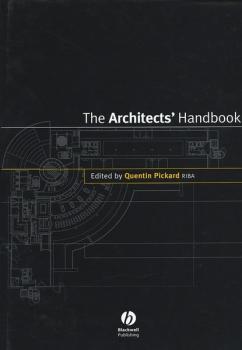Изобразительное искусство, фотография
Различные книги в жанре Изобразительное искусство, фотографияBuilding Codes Illustrated
THE BESTSELLING, FULLY ILLUSTRATED GUIDE TO THE 2018 INTERNATIONAL BUILDING CODE Uniquely marrying the graphic skills of bestselling author Francis D.K Ching with the code expertise of Steven Winkel, FAIA, the new sixth edition of Building Codes Illustrated is a clear, concise, and easy-to-use visual guide to the International Building Code (IBC) for 2018. Fully updated throughout, it highlights all of the changes to the code for quick reference and easy navigation. It pulls out the portions of the building code that are most relevant for the architect and provides an easy-to-understand interpretation in both words and illustrations. The first two chapters of Building Codes Illustrated: A Guide to Understanding the 2018 International Building Code, Sixth Edition give background and context regarding the development, organization, and use of the IBC. The following sections cover such information as: use and occupancy; building heights and areas; types of construction; fire-resistive construction; interior finishes; means of egress; accessibility; energy efficiency; roof assemblies; structural provisions; special inspections and tests; soils and foundations; building materials and systems; and more. A complete, user-friendly guide to code-compliant projects Highlights all the significant changes in the 2018 IBC Uses clear language and Frank Ching's distinctive illustrations to demystify the 2018 International Build Code (IBC) text Provides students and professionals with a fundamental understanding of IBC development, interpretation, and application Building Codes Illustrated: A Guide to Understanding the 2018 International Building Code gives students and professionals in architecture, interior design, construction, and engineering a user-friendly, easy-to-use guide to the fundamentals of the 2018 IBC.
Designing with Models
Designing with Models, Second Edition is the revised, step-by-step guide to basic and advanced design process modeling. This comprehensive text explains the process from start to finish, and has been expanded to include up-to-date information on digital modeling programs and rapid prototyping processes. The impact of this new wave of 3D modeling technology is examined through interviews and numerous examples from renowned architects. Along with many new student projects, this new Second Edition features more than 800 high-quality photographs and fully illustrated in-depth case studies and the latest information on mastering the modeling of curvilinear components with planar material and casting techniques, exploring ideas with mixed media, working backwards from model information, recording and communicating 3D design work, exploring the safe and effective use of power tools, and more.
The Architects' Handbook
The Architects' Handbook provides a comprehensive range of visual and technical information covering the great majority of building types likely to be encountered by architects, designers, building surveyors and others involved in the construction industry. It is organised by building type and concentrates very much on practical examples. Including over 300 case studies, the Handbook is organised by building type and concentrates very much on practical examples. It includes: · a brief introduction to the key design considerations for each building type · numerous plans, sections and elevations for the building examples · references to key technical standards and design guidance · a comprehensive bibliography for most building types The book also includes sections on designing for accessibility, drawing practice, and metric and imperial conversion tables. To browse sample pages please see http://www.blackwellpublishing.com/architectsdata
Form and Forces
Here, in one volume, is all the architect needs to know to participate in the entire process of designing structures. Emphasizing bestselling author Edward Allen's graphical approach, the book enables you to quickly determine the desired form of a building or other structure and easily design it without the need for complex mathematics. This unique text teaches the whole process of structural design for architects, including selection of suitable materials, finding a suitable configuration, finding forces and size members, designing appropriate connections, and proposing a feasible method of erection. Chapters are centered on the design of a whole structure, from conception through construction planning.
Art and Its Publics
Bringing together essays by museum professionals and academics from both sides of the Atlantic, Art and its Publics tackles current issues confronting the museum community and seeks to further the debate between theory and practice around the most pressing of contemporary concerns. Brings together essays that focus on the interface between the art object, its site of display, and the viewing public. Tackles issues confronting the museum community and seeks to further the debate between theory and practice. Presents a cross-section of contemporary concerns with contributions from museum professionals as well as academics. Part of the New Interventions in Art History series, published in conjunction with the Association of Art Historians.
Psychoanalysis and the Image
Psychoanalysis and the Image brings together an influential team of international scholars who demonstrate innovative ways to apply psychoanalytical resources in the study of international modern art and visual representation. Examines psychoanalytic concepts, values, debates and controversies that have been hallmarks of visual representation in the modern and contemporary periods Covers topics including melancholia, sex, and pathology to the body, and parent-child relations Advances theoretical debates in art history while offering substantive analyses of significant bodies of twentieth century art Edited by internationally renowned art historian Griselda Pollock.
Interior Design Visual Presentation
A newly updated and comprehensive guide to all aspects of visual design From doing a quick sketch to producing a fully rendered model, the ability to create visual representations of designs is a critical skill for every designer. Interior Design Visual Presentation, Fifth Edition offers thorough coverage of interior design communication used throughout the design process, complete with a broad range of real-world examples. This fully updated handbook presents a full range of styles and techniques used for interior design visual communication, from hand drawing to 3D computer modeling. Its accessible, how-to approach guides you through a variety of methods for executing creative and successful design graphics, models, and presentations. Recognizing the ongoing proliferation of digital tools for visual representation, this edition provides the latest information on software used in presentation such as Photoshop, and SketchUp, and covers the integration of Revit, and AutoCAD generated content into design presentations. • Covers all aspects of visual design and presentation for interior designers • Includes color illustrations that feature a wide range of project types including residential, healthcare and public projects, designed to highlight step-by-step instructions • Provides a discussion of incorporation of 3D digital models into presentations including use in virtual reality, and expanded information on scale models including a discussion of 3D printing • Includes a companion website for instructors, featuring PowerPoint lecture slides and an instructor's manual From traditional to cutting-edge techniques, Interior Design Visual Presentation, Fifth Edition gives students and professionals alike the tools to give life to their design vision.
Principles of Architectural Detailing
Why are buildings detailed the way they are? Why do architects and engineers seem to come to the same kind of solutions to their detailing problems? Are we satisfied with such a situation? With environmental concerns so high on designers' agendas, the answer to this third question has to be 'no'. Collectively architects, engineers and specifiers need to revisit how they detail the built environment, and address the most important and potentially difficult area of the joint between materials and components. In Principles of Architectural Detailing the authors question the way in which buildings are detailed and in particular challenge familiar joint solutions. They offer practical guidance and a number of tools to help the student of architectural detailing in the decision-making process. The emphasis throughout is on using knowledge of construction in a creative and productive way to contribute towards a built environment that enhances our well-being and which is also sustainable.
Late Antique and Medieval Art of the Mediterranean World
Late Antique and Medieval Art of the Mediterranean World is a much-needed teaching anthology that rethinks and broadens the scope of the stale and limiting classifications used for Early Christian-Byzantine visual arts. A comprehensive anthology offering a new approach to the visual arts classified as Early Christian-Byzantine Comprised of essays from experts in the field that integrate the newer, historiographical research into 'the canon' of established scholarship Exposes the historical, geographical and cultural continuities and interactions in the visual arts of the late antique and medieval Mediterranean world Covers an extensive range of topics, including the effect that converging cultures in late antiquity had on art, the cultural identities that can be observed by looking at difference of tradition in visual art, and the variance of illuminations in holy books
Art's Agency and Art History
Art's Agency and Art History re-articulates the relationship of the anthropology of art to key methodological and theoretical approaches in art history, sociology, and linguistics. Explores important concepts and perspectives in the anthropology of art Includes nine groundbreaking case studies by an internationally renowned group of art historians and art theorists Covers a wide range of periods, including Bronze-Age China, Classical Greece, Rome, and Mayan, as well as the modern Western world Features an introductory essay by leading experts, which helps clarify issues in the field Includes numerous illustrations









